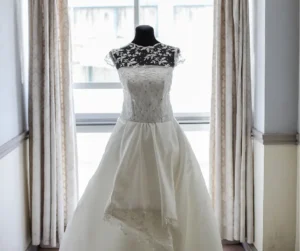Do you own expensive clothes? Are you particularly careful with certain garments? Then they require a professional touch. The importance you give to maintaining a piece of clothing is directly tied to how clean it is. Dry cleaning and online laundry services are the perfect solutions.

Dry cleaning, often referred to as “French cleaning” because of its origins, is a chemical-based cleaning procedure. Unlike home washing, which typically involves detergent and water, dry cleaning uses liquid solvents. These machines are technically advanced and data-controlled, ensuring your garments receive a super clean finish.
Behind the Scenes – Dry Cleaning
As mentioned, dry cleaners utilize a liquid solvent for cleaning. This solvent is carefully measured and poured into the machine. The reason for using these liquids is that, unlike water, they do not make the material “wet.” The solvent evaporates automatically after it removes stains from the clothes, following a re-circulation process to loosen impurities. Finally, the fabric is pressed and steamed to eliminate creases and wrinkles.
Note that the entire process, from stain pre-spotting to sanitization and finishing, can take more than two hours to leave your garment fresh and clean!
Difference Between Washing & Dry Cleaning
While the ultimate goal is the same—clean clothes—there are notable differences between dry cleaning and traditional laundering:
- Stain Removal: Dry cleaning uses chemicals and solvents such as Supercritical CO2, Chevron Phillips, and Perchloroethylene, while laundering relies on fabric softeners and detergents.
- Water Usage: Dry cleaning is done without water, whereas laundering is a water-based wash.
- Drying Process: In dry cleaning, garments are dried within a machine, while laundering includes an additional spinning step to remove excess moisture.
When to Hire Dry Cleaners
In general, garments with tailored stitches, delicate silk materials, intricate beadwork, and stubborn stains should be professionally cleaned. If you’re uncertain about the washability of an item, it’s best to seek professional help. Sophisticated pieces like branded cotton boxers, tuxedos, suits, and blazers require specialized care.
Professional Cleaning at the Dry Cleaners
Since there is no disposal or draining needed in dry cleaning (unlike soiled water in laundering), the next step is pressing. Professional dry cleaners use high-end tools to press and “finish” the garment. The finishing method varies depending on the fabric type, but steaming and pressing are common practices.
- Steaming: This process kills bacteria and removes excess water-soluble particles, also eliminating wrinkles.
- Pressing: A skilled technician inspects the fabric and performs a final iron press to ensure a crisp finish.
Quality, Safety, and Budget-Friendliness
If you prioritize safety and affordability, choose Firefly Campus Laundry (FCL). We are one of the best dry cleaners in Coimbatore. Our expert services are available at budget-friendly prices.
Our customer service team is dedicated to providing you with a hygienic experience right at your doorstep, complete with fast and convenient pickup and delivery options. Trust FCL for all your dry cleaning needs and enjoy a hassle-free laundry experience!


